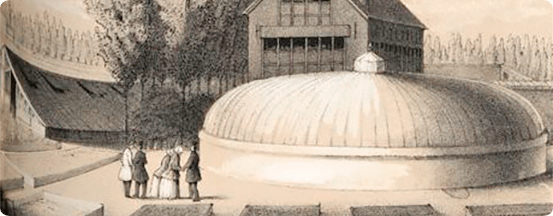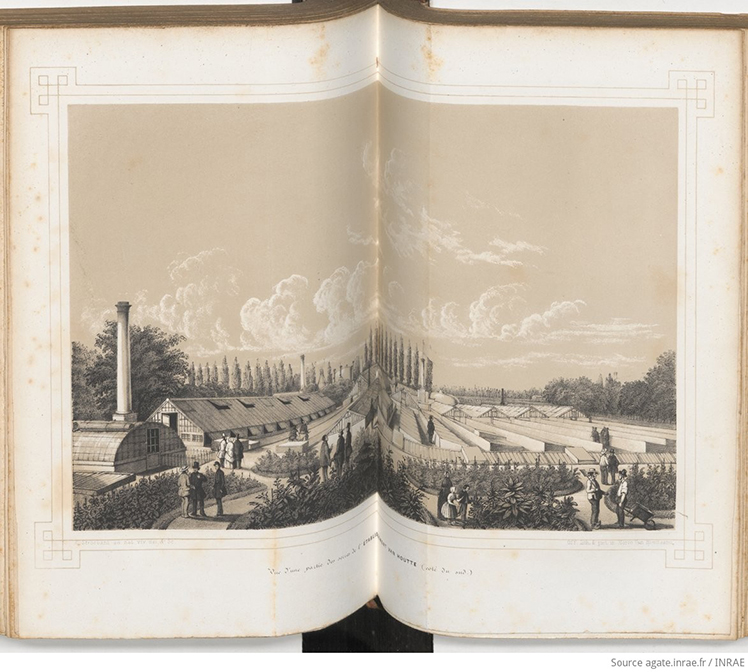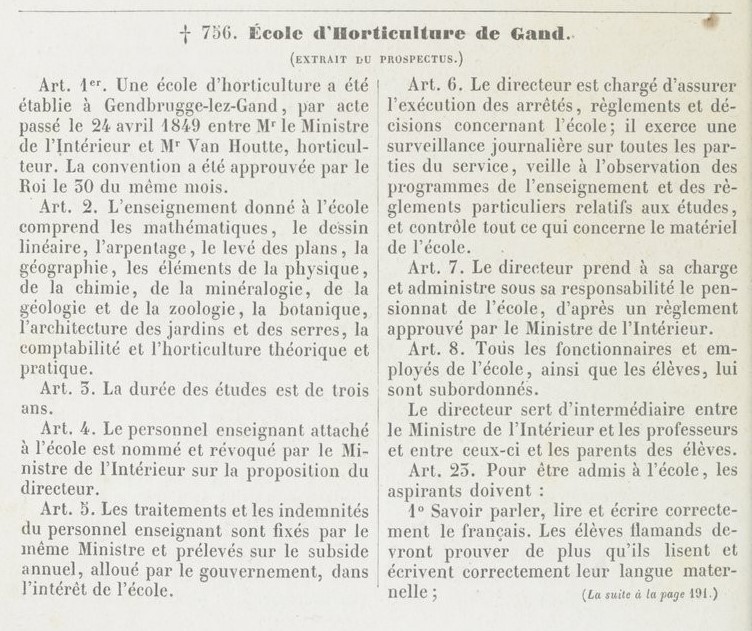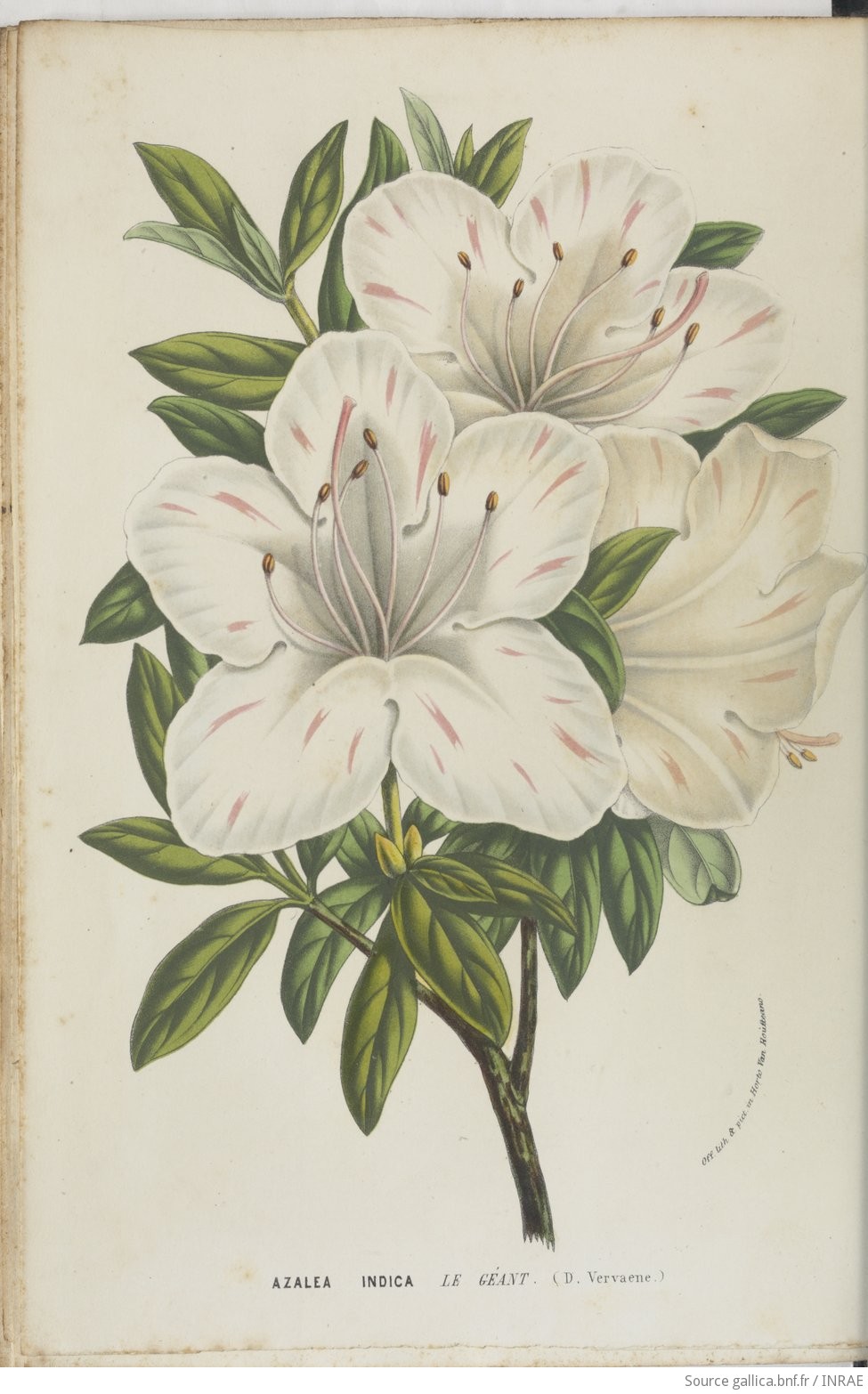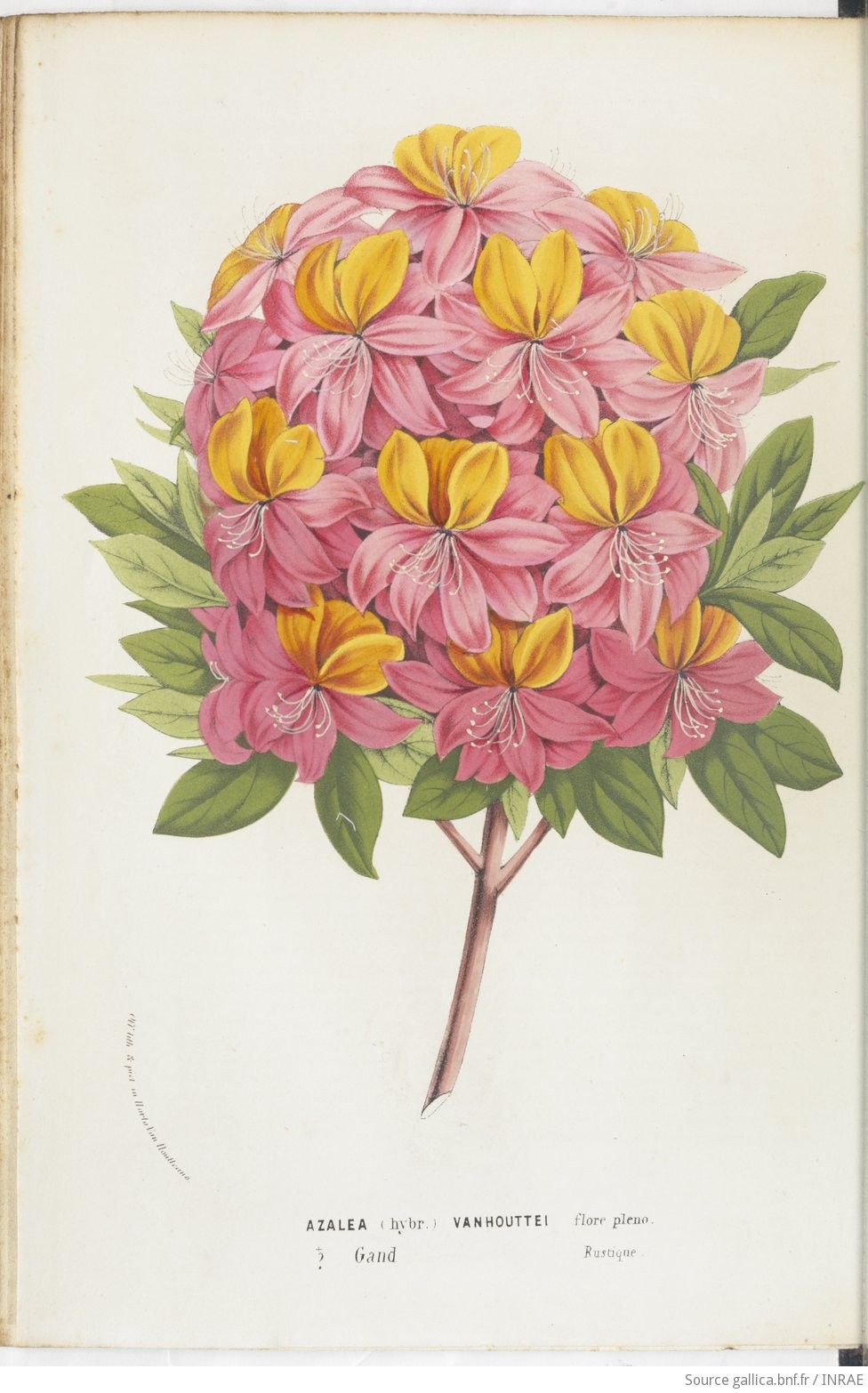Louis Van Houtte, the prince of 19th-century horticulturists
A plant enthusiast, Louis Van Houtte set up a major horticultural business in Gentbrugge-lez-Gand, Belgium, in the middle of the 19th century, to which he added a school of European renown. His garden, his varietal creations and his trade in plants and seeds were a must for enthusiasts.

Louis Van Houtte, born into a wealthy family in Ypres in 1810, attends the École Supérieure de Commerce in Paris. However, he develops a passion for plants as a child and from an early age he is given his own space in the family garden. In Paris, he spends his free time at the botanical garden, the Jardin des Plantes.
The revolution of 1830, first in France and then in Belgium, affords him the opportunity to return home and take part in the insurrection, then in the Belgian government. However, he steps down in 1833 to devote himself almost exclusively to his passion for horticulture. He goes on to publish columns on plants in the newspaper L'Émancipation, and in 1833 founds his first newspaper, L'horticulteur belge. During this period, he also establishes a horticultural business.
Recently widowed, he feels the need to explore other horizons to console himself. In partnership with M. Le Chevalier de Von, and with the support of the Belgian King Leopold I and the Brussels Botanic Garden, he sets off on an expedition to Brazil in 1834 to study the flora and bring back plants for the royal collections and those of the Botanic Garden.
On his return, he briefly holds the post of Director of the Brussels Botanical Gardens. But it is after he resigns from this post in 1839 that he creates his great masterpiece, an exceptional horticultural estate comprising fifty greenhouses, over two thousand frames, thirty hectares of cultivated land, hundreds of employees and a very prosperous horticultural business.
The printing works and colour lithography workshops set up on the horticultural estate allow the magazine and the various annual catalogues to be published on site, promoting the sale of plants and seeds. The aim is to present subscribers with the most beautiful plants, or at least those he deems the most interesting, along with growing advice. He is keen to share his passion for and the knowledge of his time on horticultural plants, as well as the exotic plants that inspire reveries at exhibitions and in the large greenhouses of botanical gardens.
In 1849, Louis Van Houtte also opens one of Europe's first horticultural schools on the estate, which would train, among others, future botanical garden directors. He himself runs the school for a quarter of a century, before it is integrated into the Ghent Botanic Garden.
The school is also involved in training arboriculturists, awarding qualifications as early as 1861, so that "any owner could entrust his trees to any of the qualified candidates without any fear".
Louis Van Houtte is a key figure in the community of horticulture enthusiasts in Europe and well beyond.
Knight of the Order of Leopold, Director of the Government Horticultural Institute, Regency Councillor, former Editor-in-Chief and founder of "L'Horticulteur Belge", former contributor to "L'Horticulteur Universel", editor and contributor to "La Flore des Serres et des Jardins de l'Europe", former Director of the Brussels Botanical Garden, former botanist and traveller to South America, the Cape Verde Islands, Africa, and so forth.
Member of the Horticultural Societies of Aalst, Antwerp, Brussels, Ghent, Leuven, Mechelen, Liège, Lille, Mons, London and Utrecht; member of the East Flanders Agricultural Institute; honorary member of the following societies: Zoological Society of Ghent, Allegheny County (United States of America), the Agricultural and Horticultural Society of Styria, the society of Palatine and Imperial County of Moscow; foreign correspondent for the: Dutch Society to promote the introduction of Javanese and Japanese produce into the Netherlands, Paris Horticultural Society, Seine Horticultural Society, Caen Society, Liège Horticultural Conferences Society, Society of Maine-et-Loire, of Sarthe, of Auvergne, of Orleans, of S'-Quentin, of Nancy, of Rouen, of Nantes, of Dordrecht, of Berlin, of Bohemia, of Edinburgh, of Pennsylvania, of Massachusetts, of the Hudson Valley, of S'-Louis (Missouri), and so on.
Prix courant Plantes de Serres et de pleine terre, 1853 (Catalogue 50).
He brings plants from the other side of the world into his greenhouses, cross breads them and creates new varieties that win him numerous prizes in horticultural competitions.
For example, his collection of azaleas, including Azalea indica , win awards in 1871 at an exhibition of the Royal Society of Ghent and at a horticultural competition in London.
He gave his name to varieties including the Rhododendron Vanhouttei Flore Pleno, which he described in 1858.
Louis Van Houtte, who was also mayor for twenty-two years, dies in 1876. He will have left his mark on his century with his passion for plants, both exotic and otherwise, and his commitment to training professionals to run botanic gardens the world over. His most enduring work is his magazine "Flore des serres et des jardins de l'Europe", whose lithographed illustrations are still a delight to collectors.
Nota bene: the title is taken from the Revue Horticole, Paris 1876, p.259.
Text written by Pascale Hénaut (INRAE - DIpSO).
How to cite : Focus Agate: Louis Van Houtte, the prince of 19th-century horticulturists, Pascale Hénaut,october 2024. https://agate.inrae.fr/agate/en/content/focus
Illustrations
The banner was made from a plate in "Flore des serres et des jardins de l’Europe" (flora of the greenhouses and gardens of Europe, in French), volume 7, published by Louis Van Houtte in 1851.

The thumbnail was made from a plate in "Flore des serres et des jardins de l’Europe" (flora of the greenhouses and gardens of Europe, in French), volume 6, published by Louis Van Houtte in 1850.
